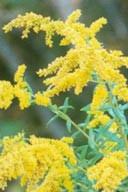 Loading... Please wait...
Loading... Please wait...- Home
- SEEDS
- SEED MIXES
- BUY PLANTS
- Info Request
-
Educational Videos
- Greenhouse Transplanting Demonstration
- Native Seed Cleaning demonstration at Ion Exchange Native Seed and Plant Nursery
- Attracting Butterflies
- Bidens - Bidens cernua Harvest Video
- Big Blue Stem Harvest
- Butterfly Milkweed Video
- Button Blazingstar - Liatris aspera Video
- Buttonbush - Cephalanthus occidentalis Video
- Canada Anemone - Anemone canadensis Harvest Video
- Cardinal Flower - Lobelia cardinalis Video
- Control Burn - Wildflower Field
- Cream Gentian - Gentiana flavida
- Culver's Root - Veronicastrum virginicum Video
- Cup Plant - Silphium perfoliatum Video
- Dormant Seeding | Planting
- Earthyman's Favorite Wildflowers Video
- Eco-Friendly Golf Course Seed Mix
- Floating Islands
- Fringed Loosestrife - Lysimachia ciliata Video
- Giant Yellow Hyssop - Agastache nepetoides Video
- Indiangrass - Sorghastrum nutans Video
- Iowa Prairie Partner Program
- Leadplant - Amorpha canescens (Potted) Video
- Meadow Blazingstar - Liatris ligulistylis
- Midland Shooting Stars - Dodecatheon meadii Video
- Native Plant Nursery Field Irrigation Experiment
- Nodding Onion - Allium cernuum Video
- Ohio spiderwort - Tradescantia ohiensis Video
- Old Man's Beard - Clematis virginiana blooms Video
- Oxeye Sunflower - Heliopsis helianthoides Video
- Prairie Spiderwort - Tradescantia bracteata
- Purple Coneflower - Echinacea purpurea Video
- Rain Garden or Water Garden Video
- Rattlesnake Master - Eryngium yuccifolium Video
- Riverbank Stabilization - Wetland Plants
- Rose Mallow - Hibiscus militaris Video
- Rosinweed - Silphium integrifolium Video
- Royal Catchfly - Silene regia
- Showy Tick Trefoil - Desmodium canadense Video
- Sneezeweed - Helenium autumnale Video
- Swamp Betony - Pedicularis lanceolata Video
- Swamp Milkweed - Asclepias incarnata Video
- Sweet Blackeyed Susan - Rudbeckia subtomentosa Video
- Tall Coreopsis - Coreopsis tripteris Video
- Urban Butterfly Garden
- Wild Bergamot - Monarda fistulosa Video
- Wild Geranium - Geranium maculatum Harvest
- Wild Goldenglow - Rudbeckia lanciniata Video
- Wild Petunia - Ruellia humilis Harvest Video
- Woodland Knotweed - Polygonum virginianum Video
- Yellow Coneflower - Ratibida pinnata Video
- Blog
- Resources
- Policies
Contact Us
Phone:
563-419-0837
or 563-535-7231
Email:
hbright@ionXchange.com
Browse Products
Add to Wish List
You Recently Viewed...
Our Newsletter
Product Description
"Canada Goldenrod, Tall Goldenrod"
Solidago comes from the Latin word solido meaning "to strengthen; to make solid" and Canadensis means "of Canada".
Tall (up to 7 feet) plants with hairy stems, generally unbranched on the lower half. Largest paired leaves grow from the middle of the stem and are quite narrow, up to 6 inches long. Undersides of the laves are also hairy. Tiny, golden-yellow flowers appear in radiating clusters at top of the plant with all flower heads on the upper side of the stem. Common throughout the Tallgrass biome and locally abundant on moist to dry open areas, especially prevalent in previously disturbed areas. It is the "weediest" of all the Goldenrod species and is actually quite rare in undisturbed prairies.
Native Americans used this plant to treat burns, made a tea from the flowers to treat fevers and snakebites. The crushed flowers were chewed for sore throats. The seeds were eaten as a survival food.
In Germany, the leaves of Canada Goldenrod are an approved remedy for use a diuretic in the treatment of inflammatory diseases of the lower urinary tract. They are alos used in irragtion therapy to prevent and treat urinary and kidney gravel.
Canada goldenrod gets a bad rap when it comes to allergies; most allergies are caused by Ragweed pollen, not Goldenrod. Edible Uses: Young leaves and flowering stems - cooked. Seed Used as a thickener in soups. The seed is very small and is only used as a survival food when all else fails.
A tea can be made from the flowers and/or the leaves.
Medicinal Uses: Haemostatic, styptic. The root is applied as a poultice to burns.
An infusion of the dried powdered herb can be used as an antiseptic.
The blossoms are analgesic, astringent and febrifuge. They have been chewed and the juice slowly swallowed to treat sore throats. A tea made from the flowers is used in the treatment of diarrhoea, body pains, fevers and snakebites. Goldenrod is a safe and gentle remedy for a number of disorders. In particular, it is a valuable astringent remedy treating wounds and bleeding, whilst it is particularly useful in the treatment of urinary tract disorders, being used both for serious ailments such as nephritis and for more common problems such as cystit. The plant contains saponins that are antifungal and act specifically against the Candida fungus which is the cause of vaginal and oral thrush. It also contains rutin which is used to treat capillary fragility, and phenolic glycosides which are anti-inflammato. The leaves and flowering tops are anthelmintic, anti-inflammatory, antiseptic, aromatic, astringent, carminative, diaphoretic, mildly diuretic, febrifuge and stimulant. A good vulnerary herb, it has also proved of value when used internally in the treatment of urinary infections, chronic catarrh, skin diseases, influenza, whooping cough, bladder and kidney stones etc. Due to its mild action, goldenrod is used to treat gastro-enteritis in children. It makes an excellent mouthwash in the treatment of thrush. The plant is gathered in the summer and dried for later use.
The seed is anticoagulant, astringent and carminative.
A homeopathic remedy is made from the plant. It is used in the treatment of kidney and bladder disorders, rheumatism and arthritis.
Other Uses: Mustard, orange and brown dyes can be obtained from the whole plant.
The source of 'Canadian goldenrod' oil. We have no further details, but it is likely to be an essential oil.
Herbal Uses: Unknown











